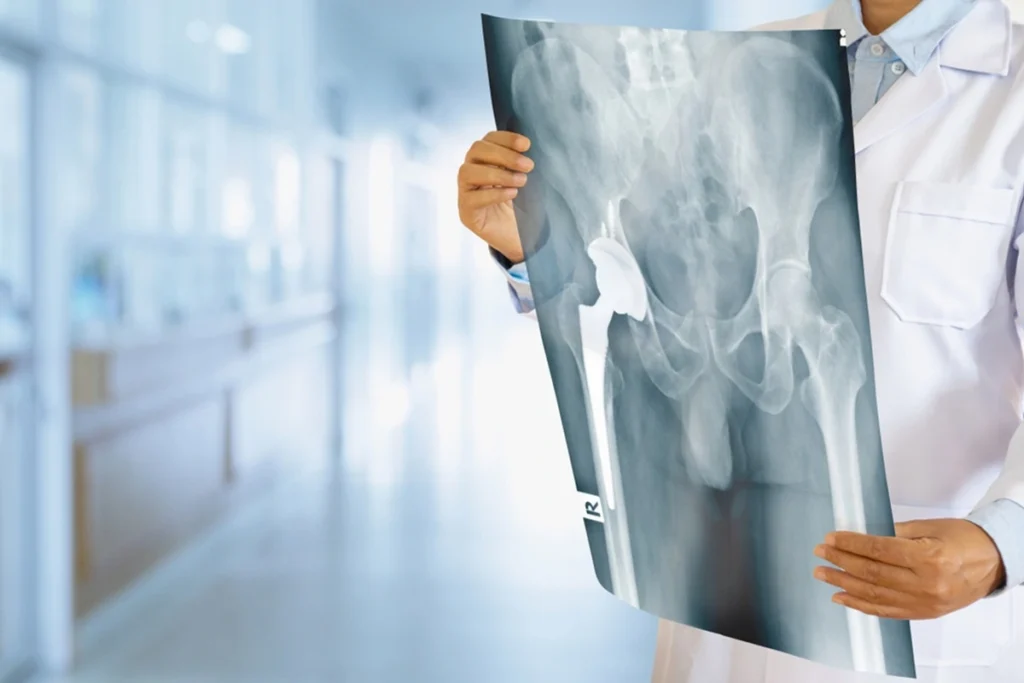Living with ongoing hip pain can slowly wear you down. Everyday things like walking, taking the stairs, or even just getting a decent night’s sleep, can start to feel harder than they should. If painkillers or physiotherapy haven’t been cutting it, hip replacement surgery might be the next thing to look into.
The procedure involves removing the worn-out parts of the hip joint and swapping them with artificial ones. These new parts are made to work like your natural joint, so you can move around more comfortably and with less pain.

The hip joint is built like a ball-and-socket. The rounded top of your thigh bone fits into a curved section of the pelvis. When this joint becomes damaged, whether from arthritis, injury, or reduced blood supply, it can cause pain and stiffness that just doesn’t go away on its own.
The biggest one? Pain relief. Most people notice a big difference in how they feel after the surgery. Daily movements that used to be uncomfortable become manageable again. Many also see a boost in how well they can walk and move.
Here’s what usually happens. The surgeon makes a cut along the outside of your thigh to reach the hip joint. The parts that aren’t working well anymore, usually the top of the thigh bone and part of the socket, are carefully taken out.
Then, those parts are replaced with new ones. These artificial joints are shaped to move smoothly and feel stable. Surgeons now often use smaller incisions, which can mean less damage to muscles and a quicker recovery.
The replacement parts are often made of metal, ceramic, or strong plastic. Sometimes, they’re attached with surgical cement. Other times, they’re designed so your bone grows into them over time. Some procedures use a mix of both techniques.
The hip surgery operation time is typically one to two hours, but factors like the type of surgery, patient’s health, and potential complications can affect the duration. There are a few ways to approach hip replacement, depending on what’s going on with your joint:
Total Hip Replacement: Both the ball and socket are replaced. It’s the most common type.
Partial Hip Replacement: Only the ball is replaced, often used after certain types of fractures.
Hip Resurfacing: The ball is reshaped and covered with metal instead of being completely replaced. This can be a better fit for younger, more active people.
Your doctor will decide what’s best after reviewing your X-rays, symptoms, and general health.
You’ll probably stay in the hospital for a couple of days. With help from the care team, you’ll start moving pretty soon after the surgery, usually with support from a physiotherapist.
In the first few weeks, you may need a walking frame or crutches. Some swelling, pain, or stiffness is normal but tends to ease up with movement, rest, and time.
Many people return to lighter activities within a few weeks. Complete recovery varies—some feel great after a couple of months, others might take a bit longer.
Being mentally and physically prepared can make a big difference in how well you recover after hip replacement.
Best hip replacement surgery hospital in Delhi like Sant Parmanand Hospital, will help you step confidently into surgery and back into a more mobile, comfortable life.
If you’ve tried non-surgical options and still struggle with daily movements due to hip pain, it might be time to consider surgery. At Sant Parmanand Hospital, the orthopaedic team will talk you through your options and help you decide what’s right for your situation.
Most surgeries go well, but like with any medical procedure, there are a few risks to keep in mind. The more common ones include:
Your surgeon will go over these risks with you and take steps to help prevent them before and after surgery. It is also important to remember that hip surgery risks for elderly may include infection, blood clots, fractures, dislocation, nerve damage, and implant loosening.
Recovery isn’t the same for everyone. You’ll likely start moving the day after surgery, with guidance from the care team.
You’ll learn basic movements and stretches to help your hip regain strength. Slowly but steadily, you’ll be able to walk more comfortably, use stairs, and get back to daily routines.
For many, it takes about 6 to 12 weeks to feel confident moving around again, though it might take longer for some. You’ll also get tips on how to stay safe at home, including how to sit, stand, climb stairs, and manage everyday tasks like bathing or getting dressed.
Most people are up and walking with support within a few days. Light activities usually resume in 4–6 weeks, though it can take a few months to feel fully back to normal.
Some soreness and stiffness is expected after surgery, but it’s usually manageable. Most people say it’s far less painful than what they felt before the operation.
You’ll want to skip high-impact moves like running or jumping for a while. Stick with low-impact activities like walking or swimming as your hip heals.
On average, a hip implant can last 15 to 20 years, sometimes longer. A 2019 review found that nearly 58% lasted 25 years or more with good care.
Related Article:
Why is Delhi a Top Destination for Hip Replacement Surgery?